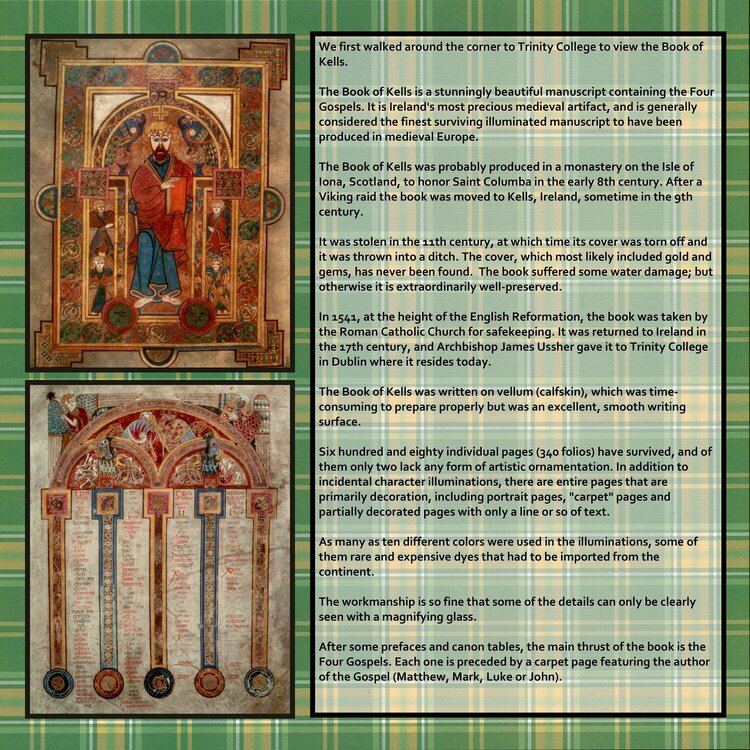EXTRA 11% OFF Orders $100+ With Code: THANKYOU


 Give a Cheer
Give a Cheer
We first walked around the corner to Trinity College to view the Book of Kells.
The Book of Kells is a stunningly beautiful manuscript containing the Four Gospels. It is Ireland's most precious medieval artifact, and is generally considered the finest surviving illuminated manuscript to have been produced in medieval Europe.
The Book of Kells was probably produced in a monastery on the Isle of Iona, Scotland, to honor Saint Columba in the early 8th century. After a Viking raid the book was moved to Kells, Ireland, sometime in the 9th century.
It was stolen in the 11th century, at which time its cover was torn off and it was thrown into a ditch. The cover, which most likely included gold and gems, has never been found. The book suffered some water damage; but otherwise it is extraordinarily well-preserved.
In 1541, at the height of the English Reformation, the book was taken by the Roman Catholic Church for safekeeping. It was returned to Ireland in the 17th century, and Archbishop James Ussher gave it to Trinity College in Dublin where it resides today.
The Book of Kells was written on vellum (calfskin), which was time-consuming to prepare properly but was an excellent, smooth writing surface.
Six hundred and eighty individual pages (340 folios) have survived, and of them only two lack any form of artistic ornamentation. In addition to incidental character illuminations, there are entire pages that are primarily decoration, including portrait pages, "carpet" pages and partially decorated pages with only a line or so of text.
As many as ten different colors were used in the illuminations, some of them rare and expensive dyes that had to be imported from the continent.
The workmanship is so fine that some of the details can only be clearly seen with a magnifying glass.
After some prefaces and canon tables, the main thrust of the book is the Four Gospels. Each one is preceded by a carpet page featuring the author of the Gospel (Matthew, Mark, Luke or John).
No products have been added to this project.
Thanks for spreading positivity!
September 03, 2016
September 01, 2016
August 30, 2016
August 26, 2016
August 26, 2016
August 25, 2016
August 25, 2016
August 25, 2016